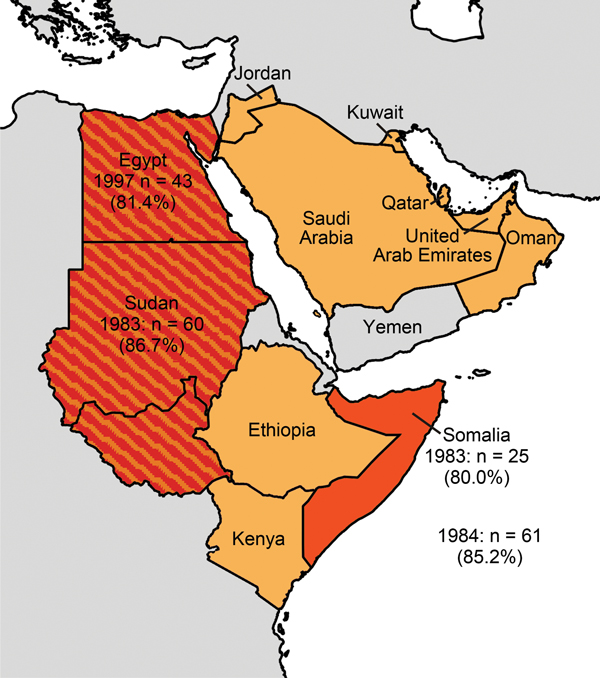Volume 20, Number 12—December 2014
Dispatch
MERS Coronavirus Neutralizing Antibodies in Camels, Eastern Africa, 1983–1997
Figure

Figure. Arabian Peninsula and neighboring countries of the Greater Horn of Africa in 2014. The study sites Egypt, Sudan (separated into Sudan and South Sudan), and Somalia are in dark orange and labeled with the year the camels were sampled, the number of samples, and the percentage of samples that were reactive in the MERS-CoV ELISA. Countries with previously reported MERS-CoV seropositive dromedaries are in light orange (overlap shown in stripes).
1These authors contributed equally to this article.
Page created: November 19, 2014
Page updated: November 19, 2014
Page reviewed: November 19, 2014
The conclusions, findings, and opinions expressed by authors contributing to this journal do not necessarily reflect the official position of the U.S. Department of Health and Human Services, the Public Health Service, the Centers for Disease Control and Prevention, or the authors' affiliated institutions. Use of trade names is for identification only and does not imply endorsement by any of the groups named above.